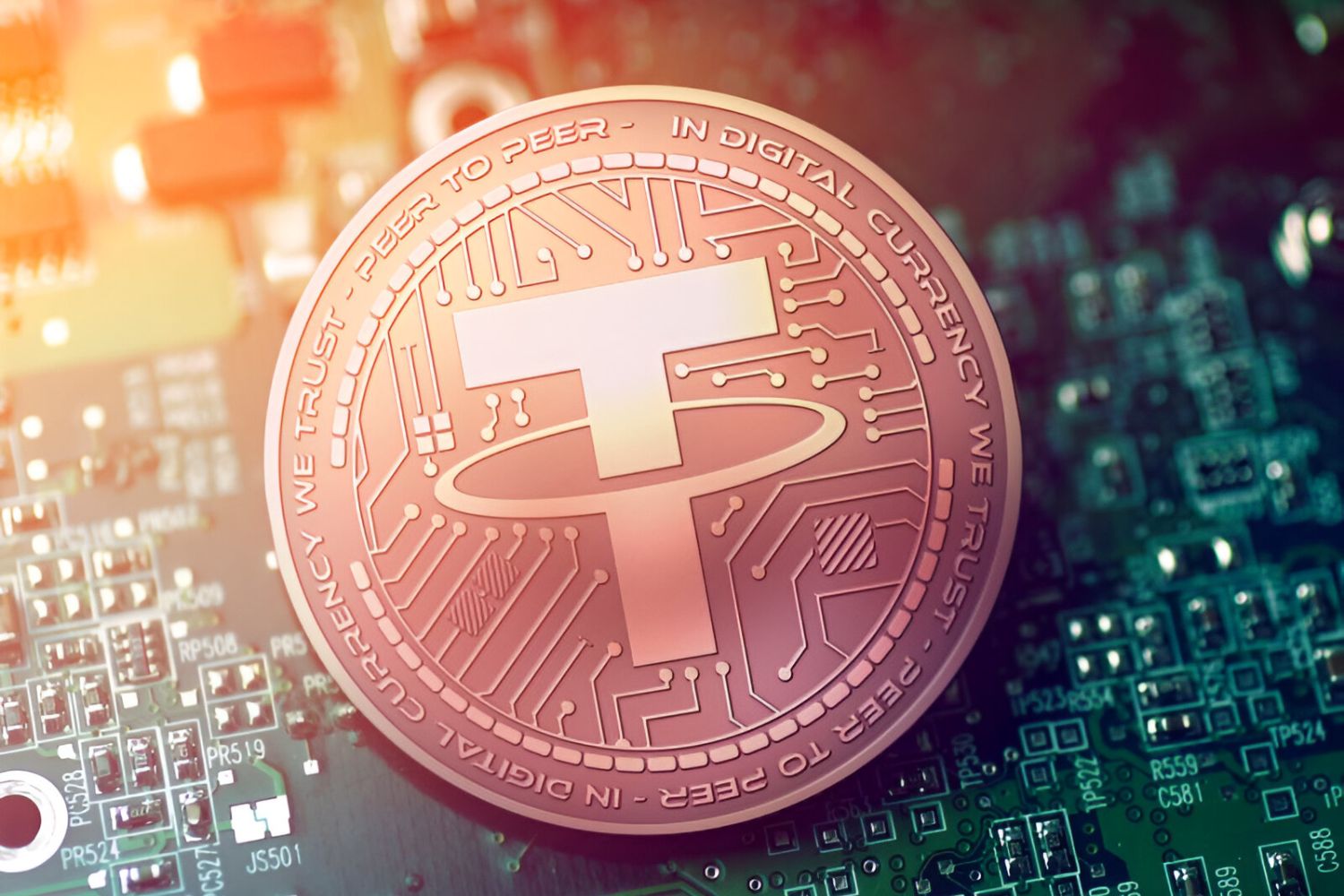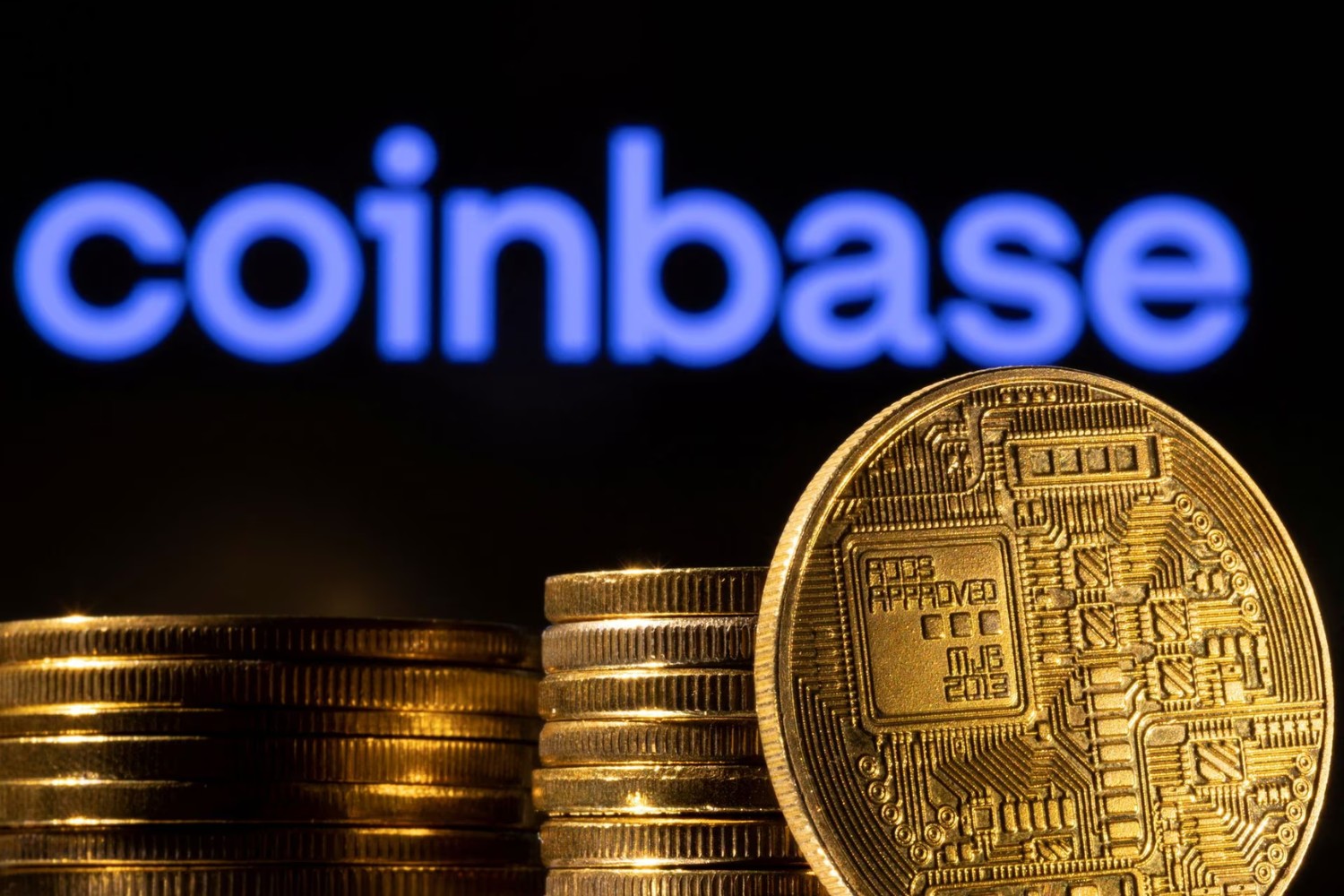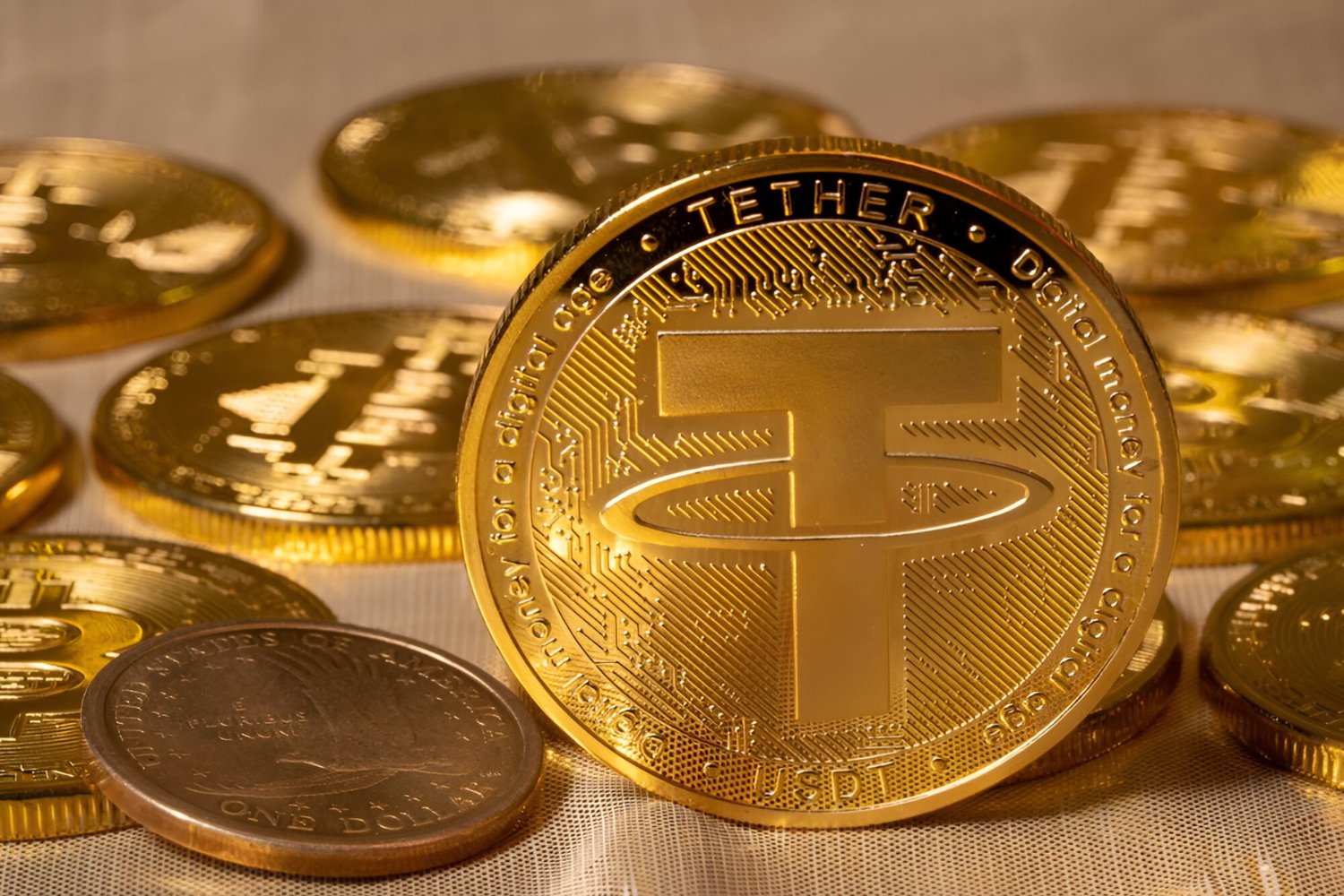Introduction
A stablecoin is a type of cryptocurrency that is designed to remain relatively stable in value, unlike traditional cryptocurrencies such as Bitcoin or Ethereum that experience frequent price fluctuations. Stablecoins are pegged to a stable asset, usually a fiat currency like the US dollar, or a commodity like gold. This pegging mechanism provides stability and mitigates the volatility inherent in other forms of digital currency.
Stablecoins have gained significant popularity in the crypto community due to the potential for stability and the ability to bridge the gap between traditional finance and decentralized digital assets. They offer benefits such as instant transactions, cross-border transfers, and a reliable store of value.
The goal of maintaining a stablecoin’s peg is to ensure that its value remains close to the pegged asset. For example, a stablecoin pegged to the US dollar should ideally maintain a 1:1 ratio, meaning one stablecoin is always equal to one US dollar. However, despite the best efforts of stablecoin developers, there have been instances where a stablecoin loses its peg, resulting in price deviations from the intended target.
In this article, we will explore the factors that can cause a stablecoin to lose its peg, the potential consequences, and the measures taken to mitigate such risks.
What is a stablecoin?
A stablecoin is a type of cryptocurrency that aims to maintain a stable value, typically by pegging it to a fiat currency, such as the US dollar or the Euro. Unlike traditional cryptocurrencies like Bitcoin or Ethereum, stablecoins are designed to minimize price volatility. They offer users the ability to transact and store value without being subject to the wild price fluctuations often seen in the crypto markets.
Stablecoins provide stability by using various mechanisms to ensure their value remains relatively constant. The most common types of stablecoins are:
- Fiat-collateralized stablecoins: These stablecoins are backed by reserves of fiat currency held in a bank account or custody. For every stablecoin in circulation, there is an equivalent amount of fiat currency held in reserve, providing a 1:1 value guarantee.
- Algorithmic stablecoins: These stablecoins use complex algorithms to automatically adjust the supply of coins based on market demand. The aim is to keep the stablecoin’s value stable by expanding or contracting the coin supply.
- Commodity-collateralized stablecoins: These stablecoins are backed by reserves of physical assets, such as gold or other commodities. The value of the stablecoin is tied to the value of the underlying asset.
Stablecoins offer several advantages over traditional cryptocurrencies. Firstly, they provide a means of transacting with digital assets without the risk of significant price fluctuations. This stability makes stablecoins more suitable for everyday transactions and can help promote wider adoption.
Additionally, stablecoins can be used as a store of value, similar to traditional fiat currencies. This makes them useful in situations where a cryptocurrency holder wants to preserve the value of their assets without converting it back to a fiat currency.
Stablecoins also enable faster and cheaper cross-border transfers compared to traditional banking systems. The use of blockchain technology allows for near-instantaneous transfers with reduced transaction fees and no reliance on intermediaries.
In summary, stablecoins aim to provide the benefits of cryptocurrencies, such as fast and secure transactions, while minimizing the volatility that often discourages widespread adoption and everyday use. By maintaining a stable value, stablecoins offer a bridge between the traditional financial world and the emerging world of decentralized digital assets.
Importance of Maintaining the Peg
The peg of a stablecoin, which determines its value relative to a specific asset, is of utmost importance for the stability and trustworthiness of the cryptocurrency. Maintaining the peg ensures that stablecoins fulfill their intended purpose as a reliable store of value and a means of exchange. Let’s explore why maintaining the peg is crucial:
1. Stability and Predictability: The primary reason for using stablecoins is to have a reliable and stable digital currency. Users and investors rely on stablecoins to maintain a steady value, similar to fiat currencies. Stability enables individuals and businesses to transact without worrying about drastic price fluctuations.
2. Facilitating Global Commerce: Stablecoins play a vital role in facilitating cross-border transactions, especially in regions with limited access to stable currencies or efficient banking systems. By maintaining a peg to a stable asset, stablecoins enable faster and borderless transactions, making international trade and remittances more accessible and cost-effective.
3. Use in Decentralized Finance (DeFi) Applications: Stablecoins are integral to the rapidly growing field of decentralized finance. They serve as the foundation for various DeFi applications, including lending, borrowing, and yield farming. Maintaining the peg in these applications is crucial to ensure the stability of collateral, interest rates, and overall system integrity.
4. Investor Confidence: Investors and traders rely on the stability of stablecoins to hedge against market volatility and as a means of diversification. Maintaining the peg instills confidence and reduces the risk of value erosion or sudden price swings, attracting more participants to the market.
5. Regulatory Compliance: Stablecoins are subject to increasing scrutiny and regulations by governments and financial authorities. Compliance with regulatory requirements often involves ensuring stablecoins maintain their peg to an approved asset. Failure to do so can result in legal consequences and hinder broader acceptance within regulated environments.
6. Use as a Medium of Exchange: The ability to transact with stablecoins in daily life for goods and services relies on their stability. Maintaining the peg ensures that stablecoins can be consistently used like traditional fiat currencies, without the need for frequent conversions.
Overall, maintaining the peg of a stablecoin is essential for providing stability, predictability, and trust to users, investors, and broader market participants. It facilitates global commerce, enables the growth of decentralized finance, and fosters confidence in the stability of the cryptocurrency ecosystem as a whole.
Factors that can Cause a Stablecoin to Lose its Peg
A stablecoin losing its peg refers to a situation where the value of the stablecoin deviates from its intended target, such as a 1:1 ratio with a pegged asset. Several factors can contribute to this loss of peg, ranging from technical issues to external market forces. Let’s examine some of the key factors that can cause a stablecoin to lose its peg:
1. Lack of Collateralization: Stablecoins that are not adequately collateralized can be at risk of losing their peg. If there are insufficient reserves to back the stablecoin’s value, market demand or unexpected events can lead to a loss of confidence and a decline in value.
2. Market Volatility: Abrupt and significant fluctuations in the broader cryptocurrency market can impact stablecoins. If market volatility increases, it can put pressure on stablecoins, making it challenging to maintain their pegged value. This can occur when the underlying assets backing the stablecoin experience substantial price swings.
3. Regulatory Changes: Regulatory changes or interventions can affect stablecoins, especially those that operate within a specific jurisdiction. Regulations that restrict or require modifications to a stablecoin’s operations can disrupt its ability to maintain the peg and lead to price deviations.
4. Development or Technical Issues: Stablecoins rely on advanced blockchain technologies and smart contracts. Any bugs or vulnerabilities in the codebase or flaws in the supporting infrastructure can potentially impact the stablecoin’s peg. A technical malfunction or failure could cause market participants to lose trust in the stability of the stablecoin.
5. Inflation or Deflationary Pressures: Stablecoins could lose their peg if they are unable to effectively respond to inflationary or deflationary pressures. Changes in the supply of the underlying asset, such as fiat currencies or commodities, can cause stablecoins to deviate from their intended value. Inflation erodes the purchasing power, while deflation reduces the circulation and liquidity of stablecoins.
6. Manipulation or Speculation: Stablecoins can be subject to market manipulation or speculative activities. Large-scale investors or market participants with significant holdings may attempt to manipulate the supply and demand dynamics of the stablecoin to profit from price deviations, causing instability and a loss of peg.
7. Lack of Trust or Transparency: Trust is a crucial aspect of stablecoins. Lack of transparency or publicly-audited reports about the reserves backing the stablecoin can lead to doubts and concerns among users and investors. Insufficient disclosure of information can undermine confidence and result in a loss of peg.
It is important to note that stablecoin projects typically implement various mechanisms and strategies to mitigate these risks and maintain their peg. These can include regular audits, collateralization ratios, governance structures, and intervention mechanisms. However, despite these efforts, external factors and unforeseen events can still impact the stability of stablecoins.
Understanding the potential risks and factors that can cause a stablecoin to lose its peg is essential for users and investors to make informed decisions and manage their exposure to these digital assets.
Lack of Collateralization
One of the primary factors that can cause a stablecoin to lose its peg is a lack of proper collateralization. Collateralization refers to the process of backing the stablecoin’s value with reserves of assets, such as fiat currencies, commodities, or other cryptocurrencies. When a stablecoin lacks sufficient collateral, it becomes vulnerable to losing its peg due to a lack of trust and confidence from users and investors. Let’s explore the implications of a lack of collateralization:
Insufficient Reserves: Inadequate reserves backing a stablecoin means that there may not be enough assets to maintain the pegged value. If the reserves fall short, market demand for the stablecoin may exceed what can be redeemed, resulting in a loss of confidence and the stablecoin deviating from its intended peg.
Redemption Pressure: When users or investors decide to redeem their stablecoins for the underlying assets, it puts pressure on the reserves. If the demand for redemptions surpasses the available reserves, the stablecoin may no longer be able to maintain its peg.
Default Risk: Without proper collateralization, stablecoins face a higher risk of default. If the entity behind the stablecoin fails to honor the redemption requests or faces insolvency, it can lead to a loss of peg and investors potentially losing their invested capital.
Credit Risk: Stablecoins that rely on third-party entities for collateralization face additional credit risk. If the backing entity faces financial difficulties or fails to honor its obligations, the stablecoin’s value may be affected, leading to a loss of peg.
Liquidity Issues: Insufficient collateral can result in liquidity issues for stablecoins. If there is a lack of available assets to support redemptions, it may lead to delays or restrictions in withdrawing funds, eroding user trust and potentially causing the stablecoin to lose its peg.
It is essential for stablecoin projects to maintain transparency and provide regular audits to ensure proper collateralization. Collateralization ratios, where the value of the reserves exceeds the stablecoin’s circulating supply, can provide additional assurance of the stablecoin’s stability.
To mitigate the risk of a lack of collateralization, some stablecoins opt for overcollateralization, where they hold reserves in excess of the stablecoin’s value. This approach provides an extra buffer to ensure that even during times of high demand or unexpected events, the stablecoin can maintain its peg.
However, it is crucial for users and investors to consider the collateralization practices and transparency of a stablecoin project before using or investing in the stablecoin. Evaluating the quality and adequacy of reserves can help mitigate the risk of a stablecoin losing its peg due to a lack of collateralization.
Market Volatility
Market volatility is a significant factor that can cause a stablecoin to lose its peg. Stablecoins are designed to maintain a stable value, but they are not immune to the broader cryptocurrency market’s price fluctuations. When market volatility increases, stablecoins may struggle to uphold their intended pegged value. Here’s how market volatility can impact stablecoins:
Impact of Bitcoin and Crypto Market Swings: Bitcoin and other cryptocurrencies, often known for their price volatility, can indirectly affect stablecoins. If there are significant price swings in the broader crypto market, it can create pressure on stablecoins, making it challenging for them to maintain their pegged value. Stablecoins may experience price deviations due to the correlation and sentiment within the overall market.
Demand for Safe Havens: During periods of market turbulence or economic uncertainty, investors often seek safe-haven assets, including stablecoins and traditional safe-haven options like gold or fiat currencies. This increased demand can drive up the value of stablecoins, causing them to trade at a premium to their pegged value, or in some cases, creating a shortage if supply cannot keep up with demand.
Secondary Market Trading: Stablecoins may be listed on various cryptocurrency exchanges, where they can be traded against other digital assets. In these secondary markets, stablecoins can be subject to speculative trading and liquidity fluctuations caused by the actions of traders and market participants. If the trading volume or liquidity drops significantly, stablecoins may deviate from their pegged value.
Black Swan Events: Unforeseen events, such as regulatory crackdowns, security breaches, or geopolitical developments, can lead to increased market volatility. These black swan events can impact stablecoins, forcing them to readjust their pegged value or causing a loss of confidence among users and investors.
Market Manipulation: Stablecoins can be subject to market manipulation attempts by large-scale investors or market participants with significant holdings. Manipulation can distort the supply and demand dynamics of stablecoins, leading to price volatility and potential deviation from the pegged value. This manipulation can be done through wash trading, spoofing, or other fraudulent trading practices.
In response to market volatility challenges, stablecoin projects often employ various mechanisms to manage and mitigate risks. For example, an algorithmic stablecoin may utilize price stabilization strategies to balance supply and demand and curb volatility. Similarly, collateralized stablecoins may adjust collateral levels or implement automatic redemption mechanisms to maintain their peg.
Users and investors should carefully evaluate the stability mechanisms put in place by stablecoin projects and consider the historical performance of a stablecoin during periods of market volatility. Understanding the potential impact of market volatility is crucial when utilizing stablecoins in investment or transactional activities.
Regulatory Changes
Regulatory changes can significantly impact stablecoins and potentially lead to a loss of peg. As the crypto industry continues to evolve, governments and financial regulators around the world are implementing new rules and guidelines to address concerns related to stability, consumer protection, and financial integrity. Here’s how regulatory changes can impact stablecoins:
Compliance Requirements: Regulatory changes may impose specific compliance requirements on stablecoin projects. This can include mandatory licensing, reporting obligations, and adherence to Anti-Money Laundering (AML) and Know Your Customer (KYC) regulations. Failure to comply with these requirements can result in operational challenges or legal consequences that may impact a stablecoin’s ability to maintain its peg.
Restrictions on Operations: Governments and regulators have the authority to impose restrictions on stablecoin operations within their jurisdictions. They may limit the scope of activities, place caps on transaction volumes, or prohibit certain types of transactions. These restrictions can hinder the stablecoin’s ability to function effectively and maintain its peg.
Supervision and Oversight: Regulatory changes often lead to increased supervision and oversight of stablecoins. This can involve regular audits, reporting obligations, and scrutiny of the stablecoin’s financial reserves and operations. The added regulatory scrutiny aims to enhance transparency, reduce risk, and ensure that stablecoins can withstand stress events and maintain their peg.
Legal Clarity and Uncertainty: Regulatory changes can bring both legal clarity and uncertainty to stablecoins. Clear regulations can provide a framework that offers stability and encourages broader adoption. On the other hand, regulatory ambiguity can create uncertainty, deterring potential users and investors and potentially affecting a stablecoin’s pegged value.
Market Accessibility: Regulatory changes in certain jurisdictions can restrict or prohibit the use of stablecoins, limiting their market accessibility. If stablecoins face regulatory challenges in key markets, it can impact their liquidity and ability to maintain their pegged value.
Stablecoin projects and industry participants actively engage with regulators to ensure compliance and build constructive relationships. Collaboration with regulatory authorities helps establish trust and facilitates the growth of stablecoin adoption within regulated environments.
It is essential for stablecoin users and investors to stay informed about regulatory developments. Understanding the regulatory landscape can help manage potential risks and make informed decisions when using or investing in stablecoins.
Development or Technical Issues
Development or technical issues can pose significant challenges to stablecoins, potentially leading to a loss of peg. Stablecoin projects rely on advanced blockchain technology and smart contracts to maintain stability and ensure the pegged value. However, issues can arise that impact the stability and functionality of stablecoins. Here’s how development or technical issues can affect stablecoins:
Bugs and Vulnerabilities: Development errors or software bugs can impact the stability and security of stablecoins. If a bug goes unnoticed or exploited, it can lead to erroneous calculations, incorrect supply adjustments, or even compromise the entire stablecoin ecosystem. Such issues can disrupt the stability and result in a loss of peg.
Smart Contract Failures: Stablecoins often rely on smart contracts to automate certain functions and maintain the peg. Smart contract failures, such as coding errors, may lead to incorrect executions or unintended consequences. These failures can result in the stablecoin deviating from its intended value.
System Overload or Congestion: Stablecoins operate within blockchain networks, which can experience congestion during periods of high demand or network stress. Congestion can lead to delays or higher transaction fees, impacting the stability and usability of stablecoins. Users may experience difficulties in transacting or redeeming stablecoins, potentially leading to concerns about maintaining the peg.
Oracles and Price Feeds: Stablecoins that rely on oracles or external price feeds to determine the pegged value are susceptible to incorrect or manipulated data. Oracle failures or incorrect price information can lead to incorrect peg adjustments, causing the stablecoin to deviate from its intended value.
Infrastructure or Network Issues: Stablecoin projects rely on a robust infrastructure and network to ensure smooth operations. Technical issues with the underlying infrastructure, including servers, connectivity, or network disruptions, can impact the stability and availability of stablecoins, potentially resulting in a loss of peg.
To mitigate these risks, stablecoin projects typically conduct rigorous testing and audits of their smart contracts and infrastructure. Additionally, transparent communication with users and prompt resolution of technical issues help maintain confidence and stability within the stablecoin ecosystem.
Users and investors should research and assess the technical capabilities and track record of stablecoin projects before engaging with them. Understanding the measures taken to address development and technical issues can help mitigate risks and ensure the stability of a stablecoin’s peg.
Inflation or Deflationary Pressures
Inflation or deflationary pressures can have a significant impact on stablecoins and can potentially cause them to lose their peg. Stablecoins aim to maintain a stable value, but external factors such as changes in the supply of the underlying asset can lead to deviations from the intended pegged value. Here’s how inflation or deflationary pressures can affect stablecoins:
Inflationary Pressures: If the value of the underlying asset, such as fiat currency or a commodity, experiences inflation, it can erode the purchasing power of stablecoins. Inflation reduces the value of the pegged asset, making it challenging for stablecoins to maintain their intended pegged value. This can result in a loss of confidence and potential deviation from the peg.
Deflationary Pressures: On the other hand, deflationary pressures can also impact stablecoins. If the supply of the underlying asset decreases or if there is a decrease in overall economic activity, stablecoins may experience a decline in supply. This reduction in supply can result in liquidity issues and hinder users’ ability to redeem the stablecoin for the underlying asset, leading to a loss of peg.
Central Bank Monetary Policy: Stablecoins pegged to fiat currencies can be influenced by changes in central bank monetary policy. If a central bank alters interest rates or introduces new policies that affect money supply, it can indirectly impact the value of stablecoins pegged to that currency. Unanticipated policy changes or economic events can result in stablecoins deviating from their intended pegged value.
Economic and Financial Stability: Economic instability or financial crises can put pressure on stablecoins, affecting their peg. Unforeseen events such as recessions, banking crises, or geopolitical tensions can impact market sentiment and investor confidence, leading to increased volatility and potential loss of peg for stablecoins.
Volatility of Commodity Prices: Stablecoins pegged to commodities are prone to price volatility in the underlying asset. Fluctuations in commodity prices, such as gold or oil, can affect the value of stablecoins pegged to these assets. If the price of the underlying commodity experiences significant swings, stablecoins may struggle to maintain their intended pegged value.
To mitigate the impact of inflationary or deflationary pressures, stablecoin projects may employ various mechanisms. Some algorithmic stablecoins may adjust their supply algorithmically in response to market dynamics, while collateralized stablecoins may diversify their reserves to mitigate risks associated with a single asset.
Users and investors in stablecoins should be aware of the potential impact of inflation or deflationary pressures on maintaining the peg. Understanding how stablecoin projects address these risks is important for managing exposure to stablecoins and making informed decisions.
Manipulation or Speculation
Stablecoins can be vulnerable to manipulation or speculative activities, which can undermine their stability and cause them to lose their peg. Manipulation refers to the intentional interference with supply and demand dynamics or other market factors to create artificial price movements, while speculation involves engaging in high-risk trading activities with the expectation of making significant profits. Here’s how manipulation or speculation can affect stablecoins:
Wash Trading and Spoofing: Wash trading involves creating artificial trade volume by simultaneously buying and selling stablecoins to give the appearance of high liquidity and demand. Spoofing, on the other hand, entails placing large orders to manipulate market sentiment and induce others to trade in a specific direction. These practices can disrupt stablecoin markets and lead to price volatility and instability.
Market Cornering: Sophisticated investors or groups with substantial holdings may attempt to corner the market by accumulating a significant supply of stablecoins. This allows them to exert control over the supply and demand dynamics, potentially manipulating the stablecoin’s value and causing it to deviate from its intended peg.
Front-running: Front-running involves prioritizing one’s own transactions ahead of others by accessing non-public information. If a manipulator gains access to sensitive information about stablecoin transactions or intends to execute large trades, they may front-run these orders to manipulate the market and profit from resulting price movements.
Speculative Trading: Speculators can contribute to instability in stablecoins by engaging in high-frequency or high-risk trading activities. Large-scale speculation can create volatile price swings that impact the stability of stablecoins, potentially leading to price deviations from their intended pegs.
Market Rumors and False Information: Spreading false information or rumors about stablecoins can induce market panic or influence market sentiment, leading to speculative trading and price volatility. Unverified information can erode trust in stablecoins and ultimately result in a loss of peg.
Thin Market Liquidity: Stablecoins that lack sufficient market liquidity are more susceptible to manipulation or speculative attacks. Thin liquidity makes it easier for manipulators to influence prices, as there may be limited trading activity to counteract their actions.
It is important for stablecoin projects to implement robust monitoring and surveillance systems to detect and mitigate instances of manipulation or speculative activities. Regulatory authorities and market watchdogs also play a crucial role in investigating and prosecuting market manipulation to ensure market integrity and stability.
Users and investors should evaluate the stability measures and trading practices employed by stablecoin projects before engaging with them. By understanding the potential risks associated with manipulation and speculation, individuals can make more informed decisions regarding the use and investment in stablecoins.
Lack of Trust or Transparency
A lack of trust or transparency within the stablecoin ecosystem can have a significant impact on maintaining the peg. Trust and transparency are essential for stablecoins as they rely on user confidence in the stability and value of the asset. Here’s how a lack of trust or transparency can affect stablecoins:
Unclear Reserves or Audit Practices: Stablecoins must provide transparency regarding their reserves and undergo regular audits to verify their collateralization. If a stablecoin project fails to disclose or provide clear information about its reserves or audit practices, it can lead to doubts about the stability and value of the stablecoin. This lack of transparency impacts trust and can result in a loss of peg.
Questionable Governance or Control Mechanisms: Stablecoin projects featuring weak governance or centralized control mechanisms raise concerns about the stability and integrity of the peg. Users and investors may be skeptical if key decision-making powers are concentrated in the hands of a select few, as it increases the risk of manipulation or mismanagement that could undermine the stability of the stablecoin.
Insufficient Disclosure of Information: Stablecoins that do not provide clear and regular updates regarding their operations, reserves, or developments can create a lack of trust among users and investors. Market participants rely on accurate and up-to-date information to assess the stability and value of stablecoins. A lack of sufficient disclosure can lead to suspicion and decreased confidence, potentially resulting in a loss of peg.
Failure to Address Security Concerns: The security of stablecoin platforms is paramount to maintaining trust. If a stablecoin project fails to address security concerns or experiences significant security breaches, it can severely impact user confidence. Instances of hacking or theft can undermine trust and result in the loss of both assets and the stability of the peg.
Incomplete or Inaccurate Information in Whitepapers: Whitepapers provide crucial information about stablecoin projects, including their operations, underlying technology, and stability mechanisms. If a whitepaper contains incomplete or inaccurate information, it erodes trust, as users and investors rely on these documents to make informed decisions. Misleading or insufficient information can lead to doubts about the stability of the stablecoin, potentially impacting its peg.
Community Perception and Trust: Stablecoins depend on community support and trust. Negative sentiment, rumors, or controversies surrounding a stablecoin project can result in a loss of trust within the community. Community trust is essential for stablecoins to maintain liquidity, market stability, and the strength of their pegs.
Stablecoin projects should prioritize transparent operations, regular reporting, external audits, and open communication with users and investors. Establishing clear governance structures and ensuring compliance with regulatory requirements can also enhance trust in stablecoins.
Users and investors should conduct thorough research, assess the transparency measures of stablecoin projects, and consider the reputations of the teams behind them. By supporting transparent stablecoin projects, the community can encourage market integrity, trustworthiness, and the longevity of stablecoin pegs.
Conclusion
Stablecoins offer a promising solution for those seeking stability in the volatile world of cryptocurrencies. However, maintaining the peg of a stablecoin is not always a straightforward task, as several factors can contribute to a loss of peg. Lack of collateralization, market volatility, regulatory changes, development or technical issues, inflation or deflationary pressures, manipulation or speculation, and a lack of trust or transparency all pose potential risks to stablecoins.
To mitigate these risks, stablecoin projects employ various strategies such as collateralization, algorithmic adjustments, reserve diversification, and transparency measures. Regular audits, open communication, and adherence to regulatory requirements are crucial for establishing trust in stablecoins and ensuring their stability.
Understanding the factors that can cause a stablecoin to lose its peg is essential for users and investors. By staying informed and conducting thorough due diligence, individuals can make informed decisions and manage the risks associated with stablecoins. It is important to assess the stability mechanisms, the quality of reserves, and the technical infrastructure behind stablecoin projects before engaging with them.
As the world of cryptocurrencies continues to evolve, stablecoin projects and regulators must work together to ensure sustainable growth and stability in the stablecoin ecosystem. Collaborative efforts can help create a transparent and trustworthy environment for stablecoins to thrive, allowing them to fulfill their potential as a reliable digital asset for everyday transactions and as a bridge between traditional finance and decentralized technologies.

























